Abstract
A hybrid cell line of clonal origin has been obtained by cocultivation of two biochemically marked human cell strains. One parental line is diploid and derived from a male infant with orotic aciduria, a rare autosomal recessive disease. This line has deficient activity for the final two enzymes in the biosynthetic pathway leading to uridylic acid and possesses the B electrophoretic type of glucose-6-phosphate dehydrogenase. The other parental line (D98/AH-2) is heteroploid, is resistant to 8-azahypoxanthine, and has deficient inosinic acid pyrophosphorylase activity. It displays the A+ variant of glucose-6-phosphate dehydrogenase. The A+ and B types of this dehydrogenase are known to be determined by allelic, sex-linked, Mendelian genes. The cloned hybrid cells exhibit genetic traits of both parents: (1) Their modal chromosome number is approximately the sum of those of the two parental lines; (2) they have levels of activity for both enzymes affected by the gene for orotic aciduria which are intermediate between those of the two parental lines; (3) they have higher activity than the D98/AH parent for inosinic acid pyrophosphorylase; (4) they have both A+ and B isozyme bands of glucose-6-phosphate dehydrogenase. These hybrid cells represent the first known example of a cloned line of mammalian origin in which two X-linked allelic genes function.
Full text
PDF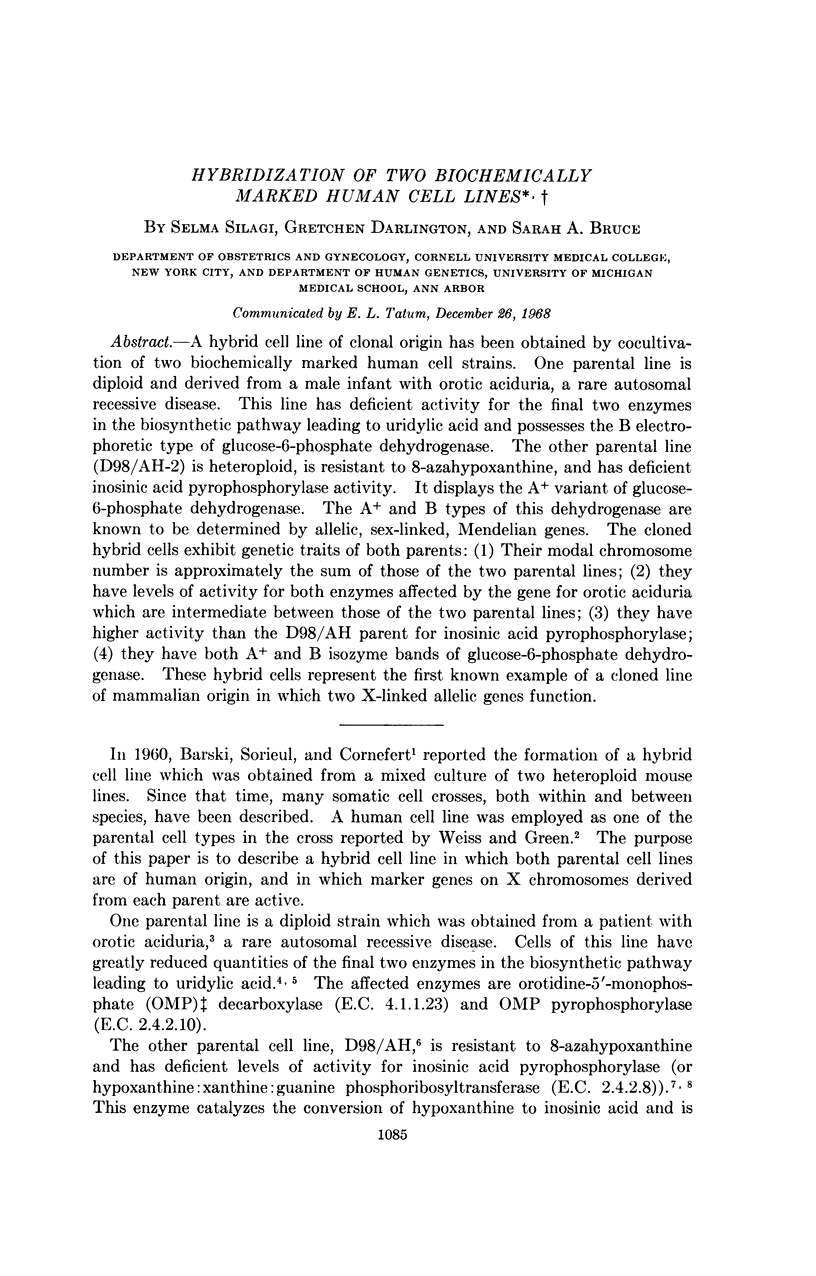
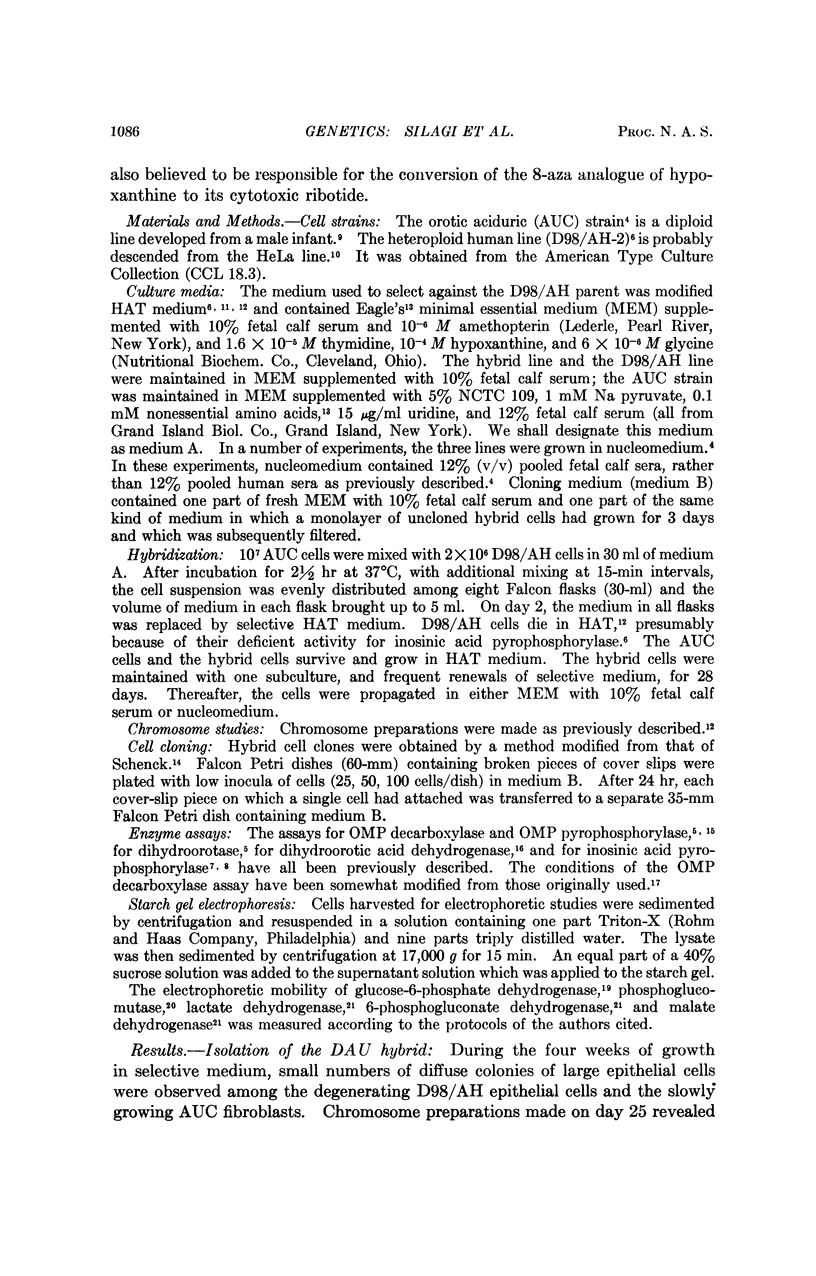
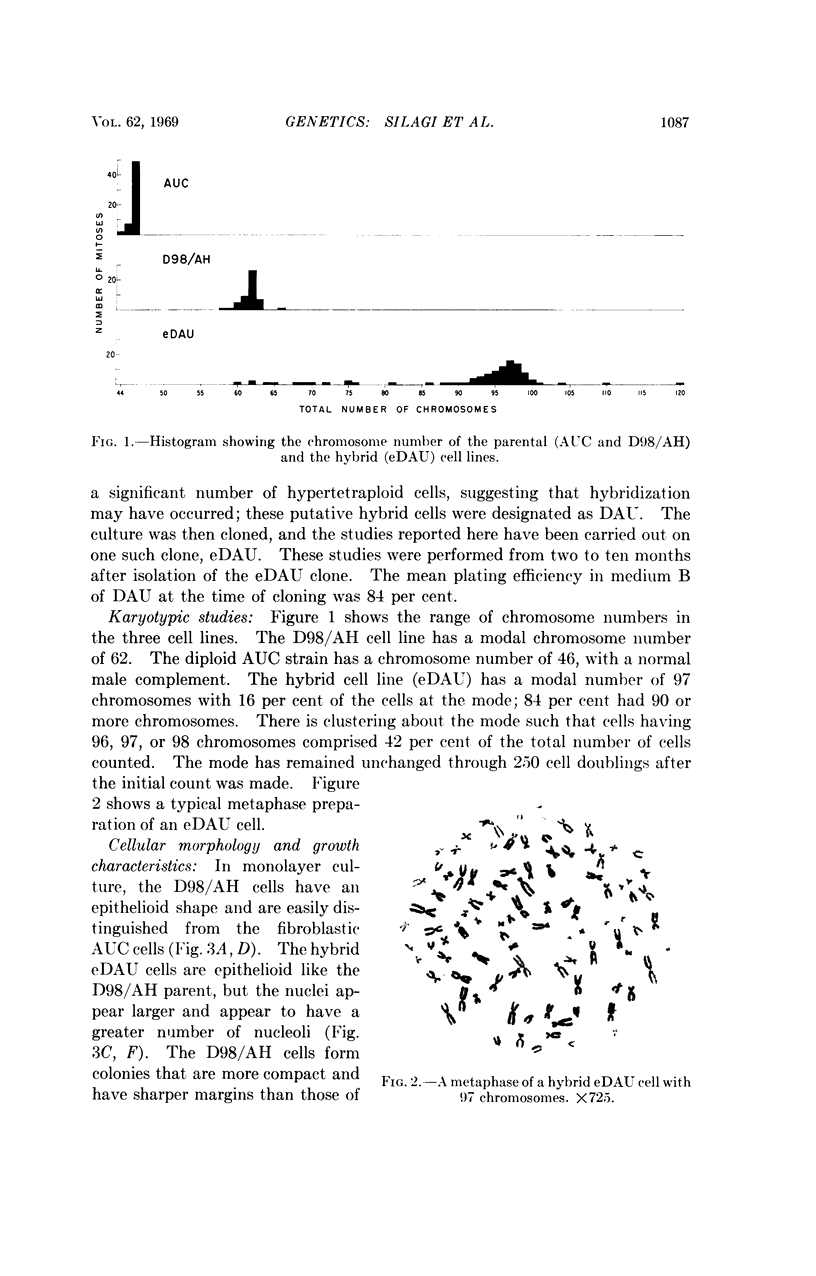
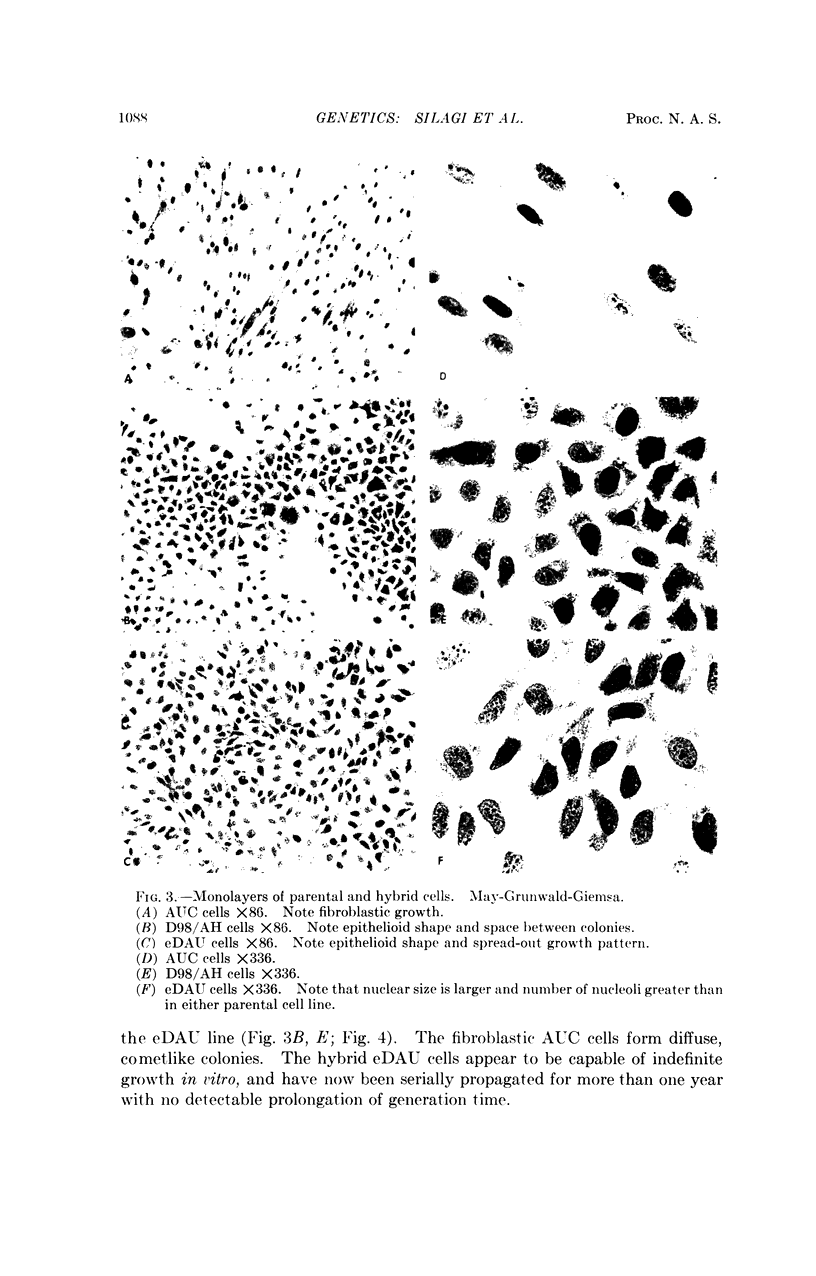
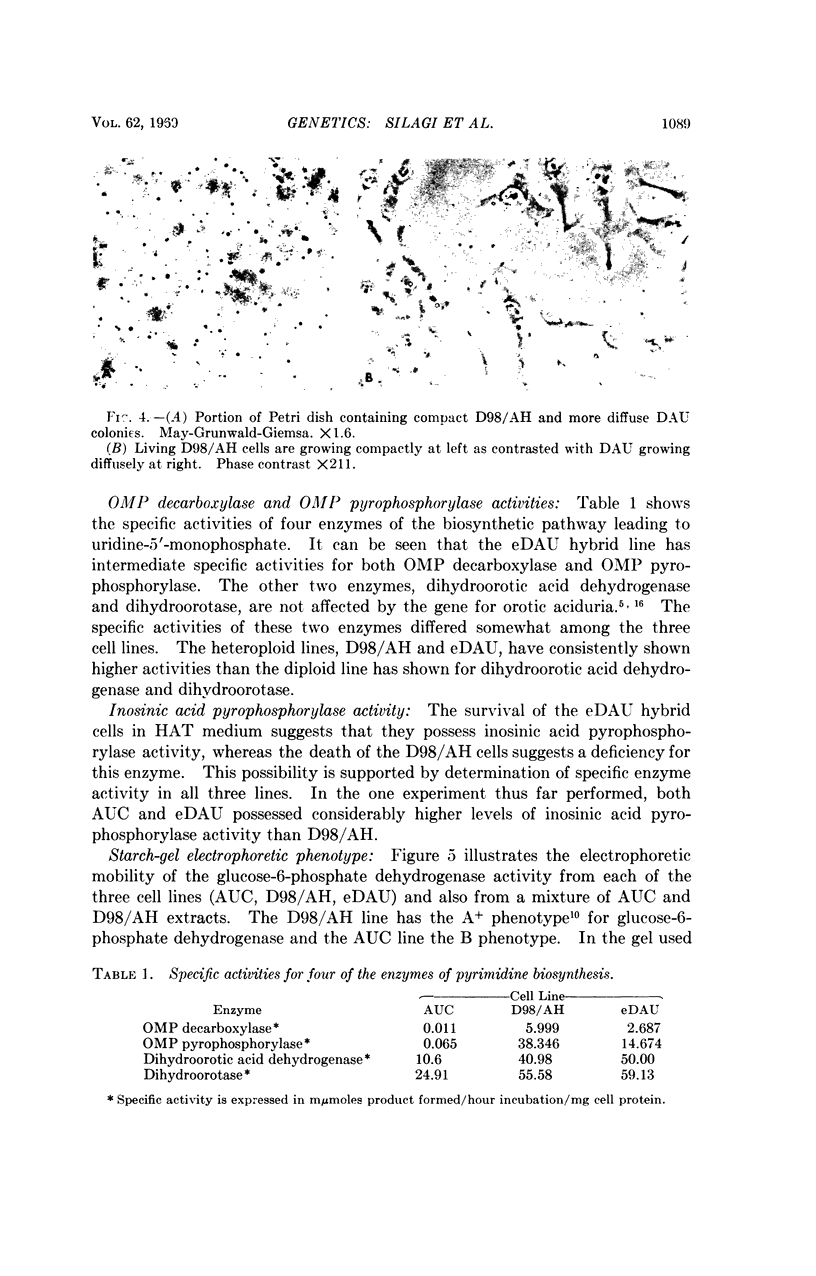
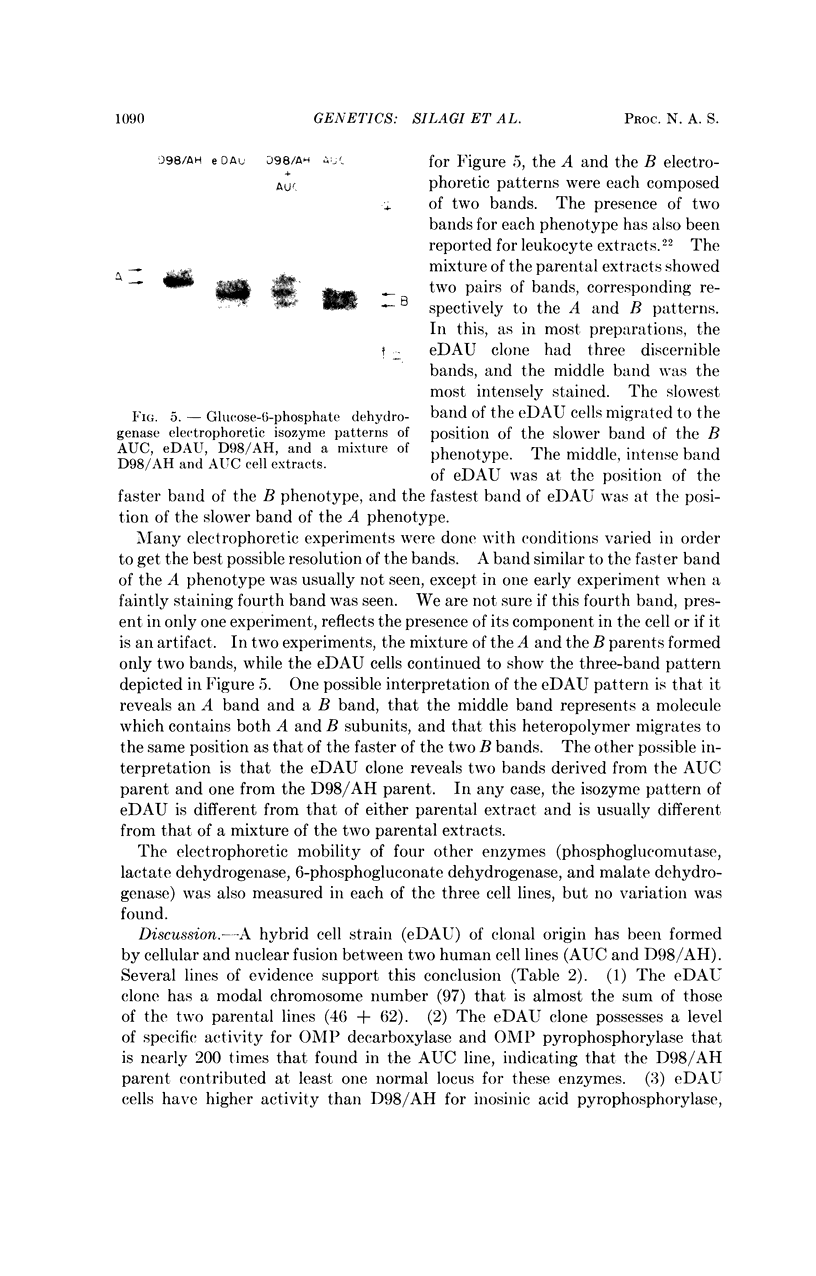
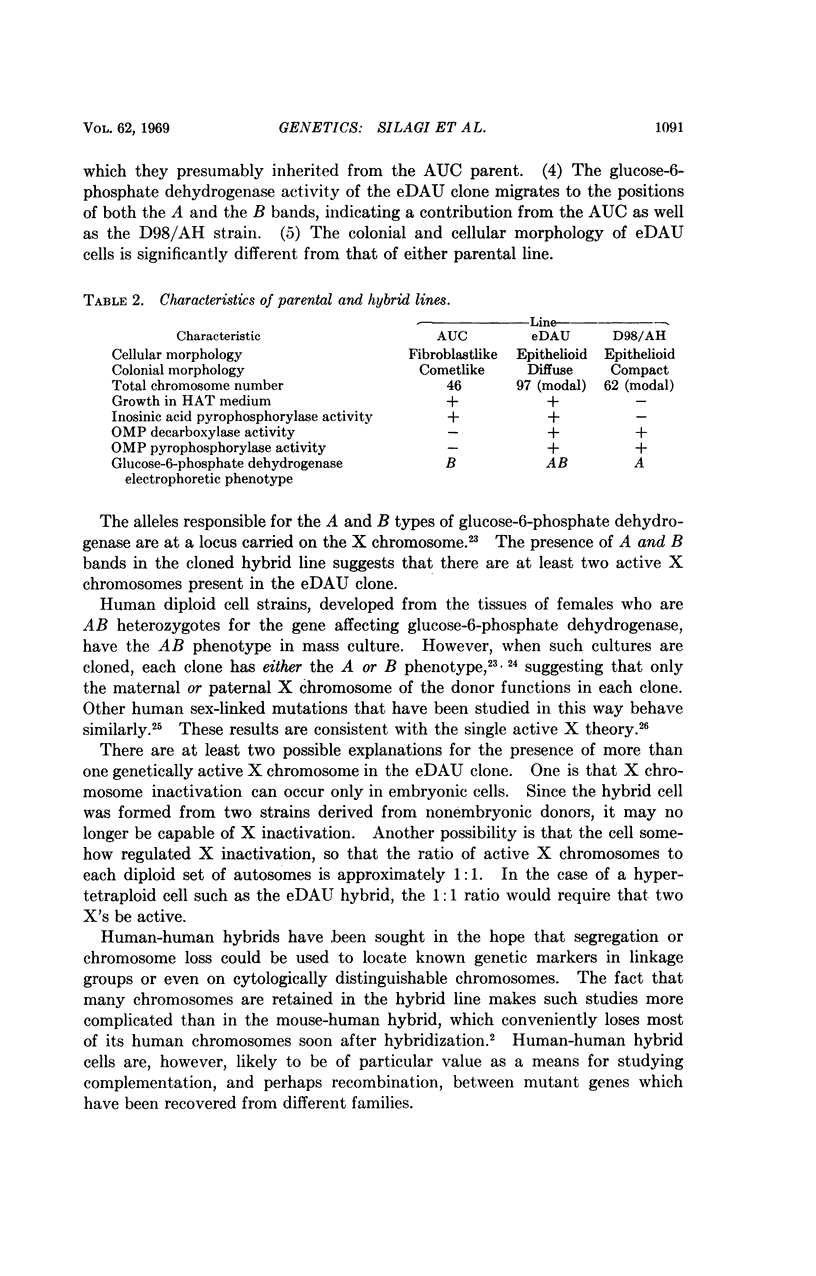
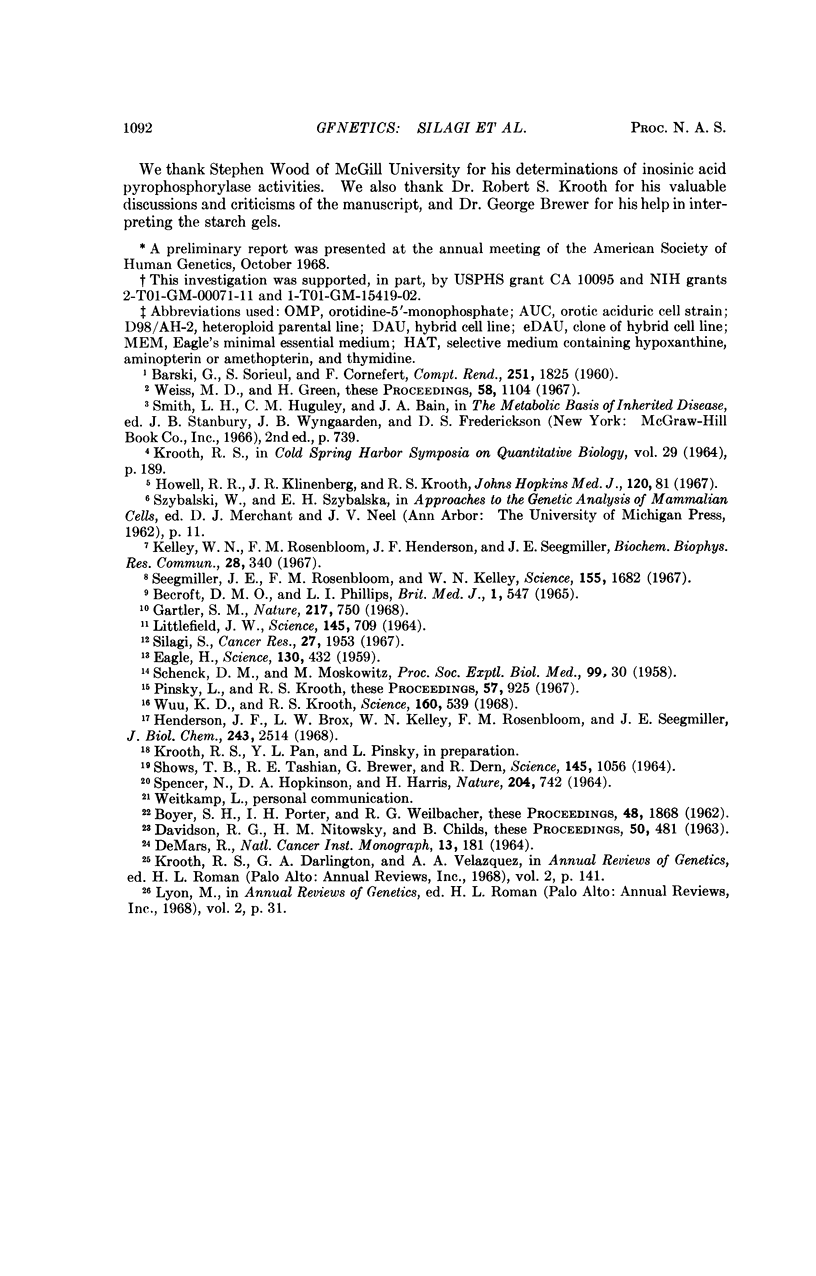
Images in this article
Selected References
These references are in PubMed. This may not be the complete list of references from this article.
- BARSKI G., SORIEUL S., CORNEFERT F. [Production of cells of a "hybrid" nature in culturs in vitro of 2 cellular strains in combination]. C R Hebd Seances Acad Sci. 1960 Oct 24;251:1825–1827. [PubMed] [Google Scholar]
- BECROFT D. M., PHILLIPS L. I. HEREDITARY OROTIC ACIDURIA AND MEGALOBLASTIC ANAEMIA: A SECOND CASE, WITH RESPONSE TO URIDINE. Br Med J. 1965 Feb 27;1(5434):547–552. doi: 10.1136/bmj.1.5434.547. [DOI] [PMC free article] [PubMed] [Google Scholar]
- BOYER S. H., PORTER I. H., WEILBACHER R. G. Electrophoretic heterogeneity of glucose-6-phosphate dehydrogenase and its relationship to enzyme deficiency in man. Proc Natl Acad Sci U S A. 1962 Oct 15;48:1868–1876. doi: 10.1073/pnas.48.10.1868. [DOI] [PMC free article] [PubMed] [Google Scholar]
- DAVIDSON R. G., NITOWSKY H. M., CHILDS B. DEMONSTRATION OF TWO POPULATIONS OF CELLS IN THE HUMAN FEMALE HETEROZYGOUS FOR GLUCOSE-6-PHOSPHATE DEHYDROGENASE VARIANTS. Proc Natl Acad Sci U S A. 1963 Sep;50:481–485. doi: 10.1073/pnas.50.3.481. [DOI] [PMC free article] [PubMed] [Google Scholar]
- DEMARS R. SOME STUDIES OF ENZYMES IN CULTIVATED HUMAN CELLS. Natl Cancer Inst Monogr. 1964 Apr;13:181–195. [PubMed] [Google Scholar]
- EAGLE H. Amino acid metabolism in mammalian cell cultures. Science. 1959 Aug 21;130(3373):432–437. doi: 10.1126/science.130.3373.432. [DOI] [PubMed] [Google Scholar]
- Gartler S. M. Apparent Hela cell contamination of human heteroploid cell lines. Nature. 1968 Feb 24;217(5130):750–751. doi: 10.1038/217750a0. [DOI] [PubMed] [Google Scholar]
- Henderson J. F., Brox L. W., Kelley W. N., Rosenbloom F. M., Seegmiller J. E. Kinetic studies of hypoxanthine-guanine phosphoribosyltransferase. J Biol Chem. 1968 May 25;243(10):2514–2522. [PubMed] [Google Scholar]
- Howell R. R., Klinenberg J. R., Krooth R. S. Enzyme studies on diploid cell strains developed from patients with hereditary orotic aciduria. Johns Hopkins Med J. 1967 Feb;120(2):81–88. [PubMed] [Google Scholar]
- KROOTH R. S. PROPERTIES ODF DIPLOID CELL STRAINS DEVELOPED FROM PATIENTS WITH AN INHERITED ABNORMALITY OF URIDINE BIOSYNTHESIS. Cold Spring Harb Symp Quant Biol. 1964;29:189–212. doi: 10.1101/sqb.1964.029.01.024. [DOI] [PubMed] [Google Scholar]
- Kelley W. N., Rosenbloom F. M., Henderson J. F., Seegmiller J. E. Xanthine phosphoribosyltransferase in man: relationship to hypoxanthine-guanine phosphoribosyltransferase. Biochem Biophys Res Commun. 1967 Aug 7;28(3):340–345. doi: 10.1016/0006-291x(67)90315-4. [DOI] [PubMed] [Google Scholar]
- LITTLEFIELD J. W. SELECTION OF HYBRIDS FROM MATINGS OF FIBROBLASTS IN VITRO AND THEIR PRESUMED RECOMBINANTS. Science. 1964 Aug 14;145(3633):709–710. doi: 10.1126/science.145.3633.709. [DOI] [PubMed] [Google Scholar]
- Pinsky L., Krooth R. S. Studies on the control of pyrimidine biosynthesis in human diploid cell strains, I. Effect of 6-azauridine on cellular phenotype. Proc Natl Acad Sci U S A. 1967 Apr;57(4):925–932. doi: 10.1073/pnas.57.4.925. [DOI] [PMC free article] [PubMed] [Google Scholar]
- SCHENCK D. M., MOSKOWITZ M. Method for isolating single cells and preparation of clones from human bone marrow cultures. Proc Soc Exp Biol Med. 1958 Oct;99(1):30–33. doi: 10.3181/00379727-99-24235. [DOI] [PubMed] [Google Scholar]
- SHOWS T. B., Jr, TASHIAN R. E., BREWER G. J., DERN R. J. ERYTHROCYTE GLUCOSE-6-PHOSPHATE DEHYDROGENASE IN CAUCASIANS: NEW INHERITED VARIANT. Science. 1964 Sep 4;145(3636):1056–1057. doi: 10.1126/science.145.3636.1056. [DOI] [PubMed] [Google Scholar]
- SPENCER N., HOPKINSON D. A., HARRIS H. PHOSPHOGLUCOMUTASE POLYMORPHISM IN MAN. Nature. 1964 Nov 21;204:742–745. doi: 10.1038/204742a0. [DOI] [PubMed] [Google Scholar]
- Seegmiller J. E., Rosenbloom F. M., Kelley W. N. Enzyme defect associated with a sex-linked human neurological disorder and excessive purine synthesis. Science. 1967 Mar 31;155(3770):1682–1684. doi: 10.1126/science.155.3770.1682. [DOI] [PubMed] [Google Scholar]
- Silagi S. Hybridization of a malignant melanoma cell line with L cells in vitro. Cancer Res. 1967 Nov;27(11):1953–1960. [PubMed] [Google Scholar]
- Weiss M. C., Green H. Human-mouse hybrid cell lines containing partial complements of human chromosomes and functioning human genes. Proc Natl Acad Sci U S A. 1967 Sep;58(3):1104–1111. doi: 10.1073/pnas.58.3.1104. [DOI] [PMC free article] [PubMed] [Google Scholar]
- Wuu K., Krooth R. S. Dihydroorotic acid dehydrogenase activity of human diploid cell strains. Science. 1968 May 3;160(3827):539–541. doi: 10.1126/science.160.3827.539. [DOI] [PubMed] [Google Scholar]












